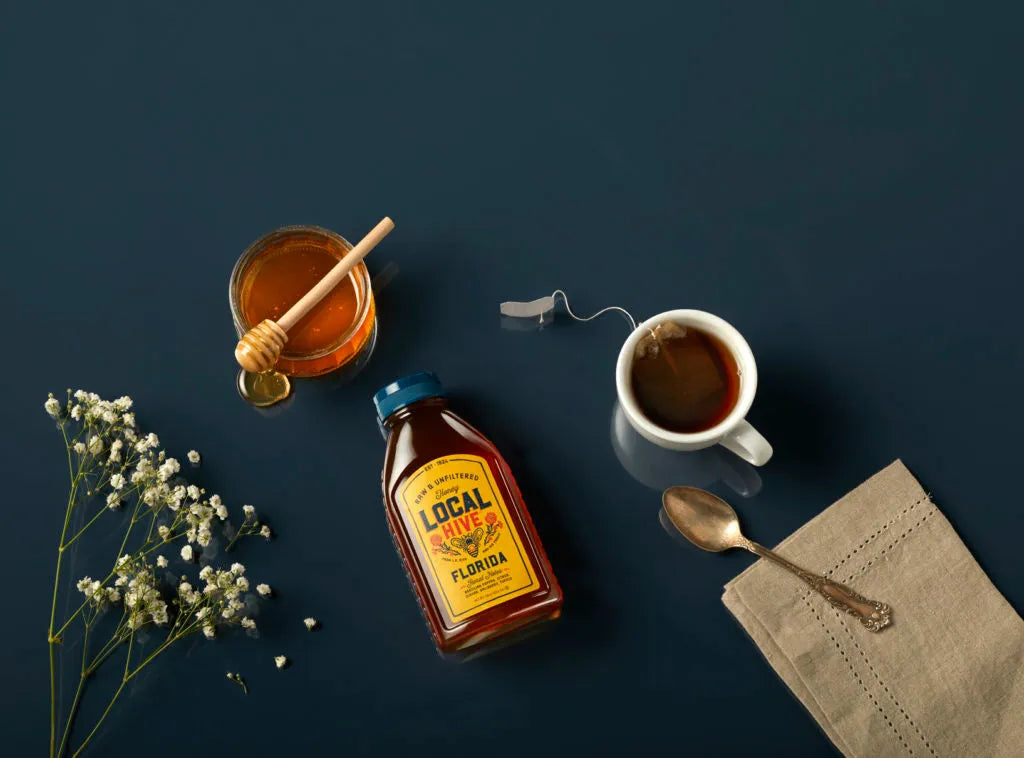Local Hive Highlight: Florida
Honey Facts
It’s hard to talk about Florida and honey without immediately thinking of the undisputed king of honey movies, Ulee’s Gold, and, of course, the undisputed king of honey songs, Van Morrison’s “Tupelo Honey.” Now that those two are out of the way, we can get to something even sweeter about Florida honey: our Florida Honey.
Although dark in color, our Florida varietal tastes as if it’s soaked in sunshine. It’s one of our bolder, more flavorful varietals, because Florida’s balmy, sun-soaked weather and unrelenting humidity make for a climate like no other. Beekeeping in Florida has its own special complications, ranging from the mundane – how do you keep your beekeepers’ suit cool in 100% humidity? – to the disastrous, with annual hurricanes that can wipe out entire beekeeping operations.
Our Florida honey varietal makes the most of the Sunshine State’s climate and its flora, featuring five local floral sources: Brazilian pepper, gallberry, clover, citrus and tupelo. Together, they create an eccentric bouquet of flavors ranging from sweet to sour to bitter – all in one spoonful.
Brazilian pepper, also known as Florida holly, is a hardy shrub with bright red berries (hence its nickname) that easily grows anywhere in Florida, from dunes to swamps.
Gallberry, which is literally Florida holly, is an evergreen shrub native to the southeastern United States. It’s also known as evergreen winterberry and inkberry
Clover is a hardy legume in the pea family that has a long history of healing damaged soil and feeding livestock. In our Florida varietal, you’re most likely to taste the fruits of crimson clover, though white Dutch clover is in there, too, and just about every available patch of soil across the country.
Citrus pollen can originate from a variety of different plants, but in the case of our Florida honey varietal, it’s almost certainly Florida oranges.
Tupelo, perhaps the most famous and sought-after honey varietal in the world besides manuka, grows throughout the Gulf Coast region’s meandering swamps. Tupelo pollen produces a light, mild-tasting honey with a flavor that manages to stand out and blend in at the same time. In Apalachicola, a swampy region of northwest Florida, local beekeepers have harvested its precious gold for generations. If you take a drive down Florida’s “forgotten coast” on Highway 30A in late March through June, you might get a glimpse of what Apalachicola is all about. Where the Apalachicola River runs into the Gulf of Mexico, millions of bees navigate the swamps, pollinating the nearby tupelo trees and creating some of the world’s finest honey.

